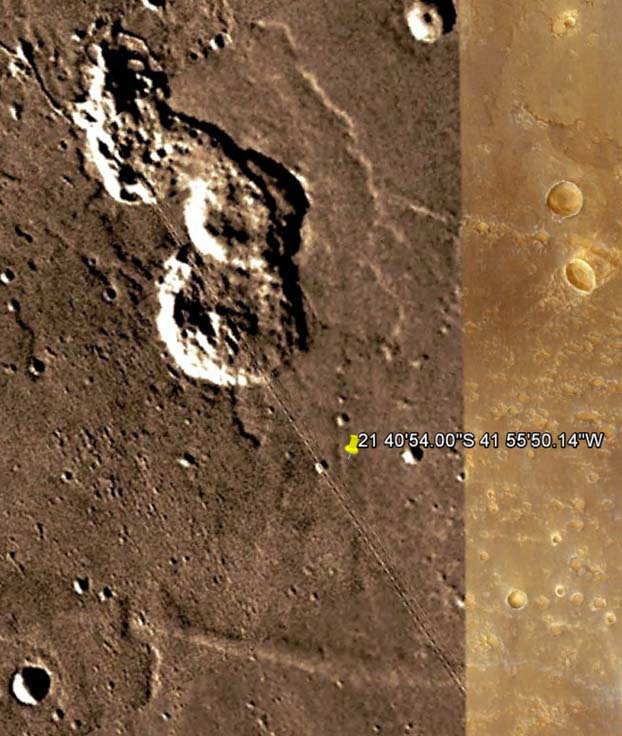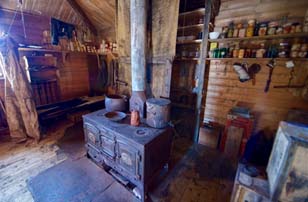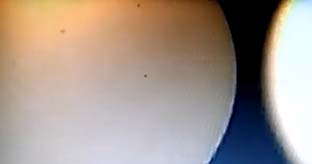|
2017 Global & Galaxy Links
|
Top 20 UFO hotspots in world
As a doctoral student at George Mason University, Sam Monfort crunched the data from the National UFO Reporting Center and determined that the following locations are the top 20 hotspots for UFO sightings around the world. He published his data in early 2017. |
|
|
- Stephenville, Texas
- Myrtle Beach, South Carolina
- Elk River, Minnesota
- The ‘M’ Triangle, Russia
- Manitoba, Canada
- Colares Island, Brazil
- Sochi, Russia
- Istanbul, Turkey
- Mexico City, Mexico
- San Clemente, Chile
- Phoenix, Arizona
- Bonnybridge, Scotland
- Broad Haven Triangle, Wales
- Wycliffe Well, Australia
- Little A’LE’INN, Nevada
- Extraterrestrial Highway, Nevada
- Nazca City, Peru
- Warminster, England
- Nullarbor Plain, Australia
- Pacific Coast Highway, California
|
The map below shows the number of UFO sighting reports per 10 million people.
|
|
Humongous butterfly shaped UFO
There are two identical deep-space NASA satellites constantly orbiting the Sun and snapping photos of it every 15 minutes. Because of the Sun’s enormous size, it takes two satellites to capture a complete stereo image of it.
Every once in a while, the satellite cameras catch something unusual like the image above which was taken on September 16, 2017. Some have labeled it the “Butterfly UFO” because of its double-wing shape.
The black circle in the middle of the photos is a shield that protects the cameras from the intense light of the Sun. It also helps us see how humongous the butterfly UFO really is. Then compare it to more typical UFOs below that the cameras have caught in the past. |
|
 
Look what happened on the Sun!!!
Every once in a while, we are able to catch NASA satellite photos of unique objects flying around the Sun, like the photo on the left. Then in a recent search through NASA satellite images we came upon the photo on the right. It was taken on April 29, 2017 by the SECCHI Stereo Ahead COR2 satellite camera. What in the world was happening then?!!!
There are several things worth mentioning. First, satellite photos of the Sun are taken every 15 minutes. Second, and the photos immediately before and after this puzzling image show nothing unusual. Third, for those not familiar with satellite images of the Sun, the dark circle shields the camera from the high intensity of the Sun’s center.
|
|
Saturn’s perplexing north pole
By Mary Joyce, website editor
NASA’s Cassini spacecraft was launched in 1997 to explore and photograph Saturn. It took seven years to reach the ringed planet. Now, after 20 years, Cassini is running out of fuel and is making a slow and final dive toward the planet. Its mission is scheduled to end on September 15, 2017.
Beyond the unique rings of Saturn, the planet’s north pole is equally intriguing to scientists. It is shaped like a hexagon – a rotating hexagonal vortex. It was first discovered in the 1980s during a flyby by the Voyager spacecraft. How a rotating cloud structure can maintain a hexagonal shape, especially after so many years, remains a mystery.
It’s also interesting that Saturn’s tiny moon Mimas (below right) has a hexagon shaped crater, and that scientists have yet to find other hexagonal shapes in our solar system. |
|
 |
It looks like a train track on Mars
There appears to be a vehicle on a track to the left of the yellow pushpin on this Google Earth image of Mars. That alone is an interesting find, but there are two other things to point out.
First, satellite mapping of the planet is photographed in strips which are then assembled into a complete global image. It’s noteworthy that the strip to the right of the tracks is totally different and reveals no tracks.
Second, the tracks go through one crater and then end in a second one where there appear to be at least two rectangular shaped structures.
You can see the tracks for yourself by copying and pasting the following longitude/latitude into the Google Earth Mars search bar:
21 40'54.00"S 41 55'50.14W
If you change the typeface or the spacing of the coordinates, it will not work. Should you have a problem, clear the search bar and type in the coordinates yourself. They will take you to a blurry image. You will need to zoom out from there to see the tracks. – The editor |
|
Astronaut twins Scott and Mark Kelly
Effects of space on Astronaut Scott Kelly
NASA scientists must have been ecstatic when Scott Kelly went into space for a year while his identical twin Mark remained on Earth. What an ideal situation for them to learn more about the long-term effects of space on the human body, especially when they could study two men with the same genetics – one in space, one on Earth.
Scientific comparisons of the twins’ vitals are being made - down to their molecular and DNA levels. Results are to be included in NASA’s Human Research Program summary report to be published later this year. Until then, here are some of the findings regarding Scott:
● Scott returned to Earth two inches taller.
● Scott’s telomeres (the caps at the end of chromosomes) had lengthened. These caps normally shorten as we age.
● Scott’s cognitive abilities were faster and more accurate in space and slowed just slightly after he returned to Earth.
● Scott’s bone formation slowed during the second half of his time on the International Space Station.
● Scott’s body was more susceptible to two bacterial groups in his gastrointestinal tract while in space.
● Many changes Scott experienced in space reversed when he was back on Earth. |
|
Astronauts who’ve spent extended time on the International Space Station:
Scott Kelly, Cosmonaut Mikhail Kornienko, Mike Fossum, Kate Rubins and Terry Vir
Space Station Astronauts miss Mother Nature |
Long-term residents of the International Space Station all miss family and friends the most while in space. Surprising to many people, they also miss Mother Nature - trees, flowers, water, birds and daily weather changes.
“What you miss is the people, and then the weather,” Astronaut Scott Kelly says. “Going outside, there’s no sun on your face . . . You never feel this cool breeze. It’s always exactly the same.”
Kelly’s space traveling companion Cosmonaut Mikhail Kornienko agrees. “You miss Earth, even though it’s always in front of you.”
“Another thing that I miss,” says Astronaut Mike Fossum, “are just the sounds and smells of nature, of growing things, of the damp, moist Earth from which springs forth life. I really miss that.” |
|
Astronaut Kate Rubins agrees. “I have heard from a lot of other people, that funny enough, they miss weather. They miss things like rain, they miss the smell of earth, they miss wind.”
|
 |
Astronaut Terry Virts more vividly explained the craving for Mother Nature with this little story:
“One day, I had been there a long time, and Misha Kornienko, Scott's crewmate on the one-year mission, a Russian cosmonaut, was working out and I floated by and I heard this bird chirping, so I stopped and looked in there, and was like ‘Where is there a bird?’
“He had nature sounds on a laptop. He was just playing birds. The Russian psychologist had sent him all these MP3 files and it was so cool to hear that. It had been 72 degrees and dry for 100 days and it's a very sterile environment. It's very pleasant, but it's sterile, so they sent some rain music. |
|
“I spent a couple months at night - we had headsets - where I would put them on and listen to the sound of rain.
“Just like on Earth, it's nice to lie down and listen to rain on the roof. One weekend, we actually put it on all the laptops across the station so wherever you went it was raining.
“It was kind of cool, and then by the end of the weekend, we were like all right, that's enough rain, and turned all the rain off because, just like on Earth, a little bit is nice and then after a few days that’s enough.” |
|
|
Antarctica: Which of 12 leaders has been there? |
|
|
|
1) John Kerry, former U.S. Secretary of State
2) Peter Cosgrove, Governor General of Australia
3) Buzz Aldrin, former U.S. Astronaut
4) Patriarch Kirill, Primate of the Russian Orthodox Church
5) Juan Carlos de Borbon, King of Spain (1975-2014)
6) Pope Francis, Leader of the Roman Catholic Church
7) Xi Jinping, General Secretary of the Communist Party of China
8) John Key, Prime Minister of New Zealand
9) James R. Clapper, former U.S. Director of National Intelligence
10) Sebastian Pinera, President of Chile (2010-2014)
11) Vladimir Putin, President of the Russian Federation
12) Prince Harry, Prince of Wales
THE ANSWER: Pope Francis has not been to Antarctica but he met with Russian Orthodox Patriarch Kirill just before Kirill’s trip to Antarctica in February 2016. They had a three-hour meeting in Cuba. It was the first time a Roman Pope and a Russian Orthodox Patriarch have met in nearly 1000 years. Vladimir Putin, according to an article in “The Moscow Times” on January 28, 2013, “accepted an invitation from Chilean President Sebastian Pinera to visit a Russian-Chilean Antarctic research station.” Putin has traveled extensively but we could not find confirmation that he has set foot on Antarctica. The other 10 leaders have all been there. With the exception of Prince Harry, one has to wonder why older men accustomed to comfortable offices are so interested in such an inhospitable place on the planet. – The editor |
|
Antarctica: Why so many research stations?
By Mary Joyce, website editor
|
There are 76 research stations in Antarctica, according to the most complete list we could find, and they are manned by researchers from approximately 30 nations. One has to wonder why there is so much interest in a frozen continent with no indigenous human inhabitants?
It is well publicized that researchers in Antarctica are interested in monitoring water and air pollution, glacial melting, climate change, astronomy, micro-organisms and fish that can survive the frigid temperatures, etc.
It is not publicized that governments around the world also are there to monitor Planet X, also known as Nibiru or Earth’s second sun. The rogue planet reportedly is coming toward Earth’s southern hemisphere.
Below is an image Marcel Jongsma caught on February 2, 2016 while watching a live view from a webcam mounted at the Neumayer Research Station in Antarctica. A year later on February 5, 2017, we viewed the same webcam for ourselves and caught the second image below. Both photos show a second sun to the right of the research station.
|
|
|
UPDATE: A day or two after the following information was posted on February 9, 2017, we discovered the coordinates for the entrance on the left also ceased to work on Google Earth. This adds to our suspicion that there may be activity at both entrances the government doesn’t want the public to know about. – The editor |
|
Antarctica: Entrances into interior of continent
Above are Google satellite photos of two entrances into the interior of Antarctica. The first one has a metal bowl-shaped “awning” over it. The second one is said to be 295 feet at its widest point and 98 feet in height. To give a perspective to this, the wingspan of a Boeing 747 jet is 196 feet.
We intended to provide coordinates for the two entrances so anyone could find them by copying and pasting them into the Google Earth searchbar.
LEFT IMAGE: -6636’12.58”,+9943’12.72”
RIGHT IMAGE: -6633’6.60”,+9050’24.84”
The coordinates for the left image worked for us every time. It’s a different story with the right image. The coordinates no longer work. So, we found an old video showing the two entrance locations marked with yellow pushpins.
|
|
Next, we went back to the coordinates for the left entrance and used the dark shapes on the ground as a visual guide to the second entrance. What we found looks like someone saturated the entire area in black India ink.
The yellow arrow in the satellite photo below points to the approximate location of the second entrance. Then if you keep zooming in, a tiny little box appears. Click on that and it will say “Opening 2” but when you keep zooming in, an archived image of the entrance appears in a box. It no longer is possible to cruise the site. We have to wonder if there is activity at the entrance we’re not supposed to see. – The editor
|
|
Antarctica: Two structures built by South Pole pioneers |
|
Trinity Church is a small Russian Orthodox Church on King George Island near Russia’s Bellingshausen Station in Antarctica. It is a 49-foot-tall wooden structure that can accommodate 30 worshippers. Carpenters built the chapel in Russia out of Siberian pine, then it was dismantled and shipped to Antarctica where it was reassembled. Russian Orthodox Patriarch Kirill visited and blessed the chapel, and the continent, in February 2016.
|
  |
Early explorer’s cabin in Cape Royds, Antarctica - Sir Ernest Henry Shackleton was an explorer who joined an expedition to Antarctica in 1901. He was sent home early due to bad health. Later he led a trans-Antarctica expedition but his ship was crushed by ice. He and his crew drifted on sheets of ice for months until they reached Elephant Island which is off the northern coast of Antarctica. Somehow, they all managed to survive. |
Antarctica: Jobs available with major corporation
Lockheed Martin, which is an American global aerospace, defense, security and advanced technologies company, is hiring people for jobs in Antarctica. This is the employment information on the corporation’s website:
“Most people will work a contract during the busy austral summer season (October-February) at McMurdo or South Pole stations. There are also a select number of Antarctic winter positions available (February-October). Employees are expected to remain on station for the duration of their contract.
“Most Antarctic operations take place at three U.S. stations (McMurdo, Palmer, and South Pole), two research vessels (the Laurence M. Gould and the Nathaniel B. Palmer), as well as field camps.
“Salaries are competitive with similar positions in the U.S., and benefits are offered. Pay is direct deposited in your U.S. bank account. Airfare from your home to the station or research vessel is included, as is room and board.
“In addition to the required job skills, all candidates must pass strict physical and dental examinations, a psychological examination for winter positions, a pre-employment background check, a drug screen, and proof of U.S. citizenship.
“Employees live in dormitory rooms, with meals provided. Dining is cafeteria-style, and recreational opportunities include educational and physical activities. Communication with family and friends is available through Internet and telephone. No personal use of Skype™ or similar types of video chat communication is allowed because of bandwidth limitations.”
Below are photos of places where Lockheed Martin employees most likely would be working: the Laurence M. Gould, the Nathaniel B. Palmer ships; and the McMurdo, Palmer and South Pole stations. The last photo is a sample field camp.
|
|
|
|
|
|
UFO exits volcano, then becomes huge sphere of light
Periodically, we’ve posted webcam images of UFOs popping in and out of Mexico’s famous Popocatepetl Volcano. On January 24, 2017, a webcam due east of the volcano caught something a bit different - a UFO leaving the volcano and then exploding into a huge sphere of light before flying beyond view of the camera.
The webcam, which is mounted at the Holiday Inn in Puebla La Noria (red marker), is part of a countrywide network of more than 100 webcams. Live views from any of them can be seen at www.webcamsdemexico.com. – The editor |
|
|
Author David Meade studied economics and astronomy
at the University of Louisville
PLANET X – THE 2017 ARRIVAL |
If you want to learn more about Planet X but don’t have time to do your own research, you might want to read David Meade’s latest book “PLANET X – THE 2017 ARRIVAL.” It’s a condensed, easy-to-read summation of what appears to be extensive Internet research about our solar system’s rogue planet. We’ve added the following images. – The editor
Here are a few tidbits from Meade’s smorgasbord of Planet X information:
● “What these modern scientists discovered is that Planet X is a huge DARK planet which is much, much larger than the earth. It is so large we refer to it as a planet, yet it has an elliptical orbit more like that of a comet than a planet. Its orbit is so elongated that it spends most of its time in the darkness of outer space and comes back into our inner solar system every 3,630 years!” |
|
● “Plant X is not going to destroy the earth but it’s going to affect for a period of years every living person on the planet. It’s going to cause massive destruction.”
● “If you’d like to view it (Planet X) yourself, you can install WorldWide Telescope>. Just Google it and you’ll be right at the page. It’s an observatory on your desktop and the most sophisticated online program I’ve seen.”
● “So called ‘global warning’ is a cover story. The earth is heating up from the core outward because of the approach of Planet X”
● “Planet X is the reason we have a Seed Vault in Greenland.”
● “. . . just ask yourself where did 2.2 Trillion disappear to in the Pentagon’s budget, and why do we have over 100 Underground Deep Bunkers throughout the U.S.? Why are critical government infrastructures moving from their susceptible positions on the East Coast to the protected areas of Colorado?”
● “I believe the next North Pole will be in Siberia, northwest of Lake Baikal, near the borders of Russia and Mongolia. There is a large magnetic anomaly there. The famous Tunguska blast event of 1908 occurred there. The Magnetic North Pole is already moving in that direction.” |
|
● “When Pioneer 10 was sent out to study Planet X it encountered a mysterious force – dubbed the Pioneer anomaly by baffled NASA scientists. It was gently pushed against (by the force of the magnetosphere of Planet X) and moved in the opposite direction back towards the Sun.” (The Pioneer 10 satellite was launched in 1972.)
● “The real reason for the Hubble Space Telescope was NOT to explore the solar system and the Universe . . . The real reason for spending billions of dollars to construct the telescope, place it in orbit, and then immediately replace parts on it was for the purpose of viewing inbound Planet X.” (The Hubble Space Telescope was launched in 1990.) |
 |
Meade also gets into end-time prophesies and his personal interpretation of The Book of Revelation in the Bible, especially in pages 16-68. He believes that “Wormwood” of the Bible is the same as Planet X or Nibiru. He even sticks his neck out and predicts Planet X will pass dangerously close to Earth later this year.
|
|
|
Private observatory catches things NASA tries to hide |
Slooh is an astronomy service offering live views of the cosmos via your own computer. Its two main observatories are located where the air is clear – Mt. Teide in Spain’s Canary Islands (shown above) and the hills above La Dehesa, Chile. Slooh also has other facilities around the world. |
|
Paul Cox (shown above) is Slooh’s chief astronomical officer and host of live broadcasts of major astronomical events. On May 9, 2016, while viewers were watching the transit of Mercury across the Sun, Cox stunned many of them when he said:
|
 |
“You may be asking yourself, what is that large round thing to the right of the Sun? Well, that’s our second sun. I don’t know if you knew that we had a second sun, but there it is. It’s normally hidden from view. NASA and other organizations usually hide that stuff away from us. They don’t tell us the truth, but there it is. It’s true.”
|
|
Many believe the second sun is the same as Nibiru or Planet X. CLICK HERE to see and hear the 1:32 video. |
|
|
